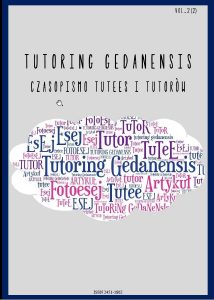Czy nowe technologie medycyny molekularnej będą skutecznym remedium przeciwko chorobom przewlekłym i nowotworom?
Słowa kluczowe:
choroby przewlekłe, terapia genowa, komórki macierzysteDownloads
Bibliografia
Allen A., Biswas M., Pudupakam R. S., Raghunath S., Sriranganathan N., 2017. Genetically engineered oncolytic Newcastle disease virus mediates cytolysis of prostate cancer stem like cells. Journal of Biotechnology, 260, 91–97.
Bauer J. W., Bicciato S., Bondanza S., Carulli S., Contin R., De Luca M., De Rosa L., Enzo E., Fischer M., Hirsch T., Jacobsen F., Jurman I., Klausegger A., Kneisz D., Kueckelhaus M., Lehnhardt M., Luecke T., Morgante M., Pellegrini G., Quaglino D., Reichelt J., Romano O., Rothoeft T., Scaglione D., Seconetti A. S., Teig N., 2017. Regeneration of the entire human epidermis using transgenic stem cells. Nature, 551, 327–332.
Benitez J. A., Colombo M., Domanski M., Hedlund E., Jutzi D., Mechtersheimer J., Nasif S., Reber S., Ruepp M.D., 2017.
CRISPR-Trap: A clean approach for the generation of gene knockouts and gene replacements in human cells. Molecular biology of the cell, 22(28).
Bennet D., 2017. Unique gene therapy prevents, reverses multiple sclerosis in animal model. University of Florida Health [online], https://ufhealth.org/news/2017/unique-gene-therapy-prevents-reversesmultiple-sclerosis-animal-model.
Boisgerault N., Grégoire M., Fonteneau J. F., 2017. Viral cancer therapies: are they ready for combination with other immunotherapies?. Future oncology, 13(18), 1569–1571.
Califf R. M., Marks P. W., Witen C. M., 2017. Clarifying Stem-Cell Therapy’s Benefits and Risks. The New England journal of medicine, 376(11), 1007–1009.
Chai J. N., Chheda M. G., Diamond M. S., Fernandez E., Gorman M. J., Hubert C. G., McKenzie L. D., Prager B. C., Rich J. N., Richner J. M., Shan C., Shi P. Y., Tycksen E., Wang X., Zhang R., Zhu Z., 2017. Zika virus has oncolytic activity against glioblastoma stem cells. The Journal of experimental medicine, 214(10), 2843–2857.
Fu X., He J., Zhang T., 2017. Using a novel cellular platform to optimize CRISPR/CAS9 technology for the gene therapy of AIDS. Protein Cell, 8(11), 848–852.
Głowacki Ł., 2017. Choroby autoimmunologiczne – mechanizmy powstawania, Wirusy i choroby nowotworowe. Biotechnologia.pl [online], http://biotechnologia.pl/biotechnologia/chorobyautoimmunologiczne-mechanizmy-powstawania,17211, http://biotechnologia.pl/biotechnologia/wirusyi-choroby-nowotworowe,16813.
Guo X., Wen Y., Zhang F., 2014. CRISPR/Cas9 for genome editing: progress, implications and challenges. Human molecular genetics, 23, R40-R46.
Inoue H., Marumoto T., Miyamoto S., Nakamura T., Nakanishi Y., Okazaki T., Sakamoto C., Shimizu H., Takahashi A., Takayama K., Tani K., Urata Y., Yamada M., 2012. Coxsackievirus B3 Is an Oncolytic Virus with Immunostimulatory Properties That Is Active against Lung Adenocarcinoma. Cancer research, 72(10), 2609–2621.
Joung J. K., Kleinstiver B. P., Nguyen N. T., Pattanayak V., Prew M. S., Tsai S. Q., Zheng Z., 2016. Highfidelity CRISPR–Cas9 nucleases with no detectable genome-wide off-target effects. Nature, 529(7587), 490–495.
Khan M., Pelengaris S., 2013 The Molecular Biology of Cancer: A Bridge from Bench to Bedside, WileyBlackwell Krajczyńska E., 2017. Stem cells will help to treat hard-to-heal wounds. PAP - Science and Scholarship in Poland [online], http://scienceinpoland.pap.pl/en/node/25549.
Patterson P. H., Southwell A. L., 2011. Gene Therapy in Mouse Models of Huntington Disease. The Neuroscientist: a review journal bringing neurobiology, neurology and psychiatry, 17(2), 153–162.
Sokołow A., 2017. Nowotworowe komórki macierzyste. Biotechnologia.pl [online], http://biotechnologia.pl/biotechnologia/nowotworowe-komorki-macierzyste,17296.

 Uniwersyteckie Czasopisma Naukowe
Uniwersyteckie Czasopisma Naukowe



